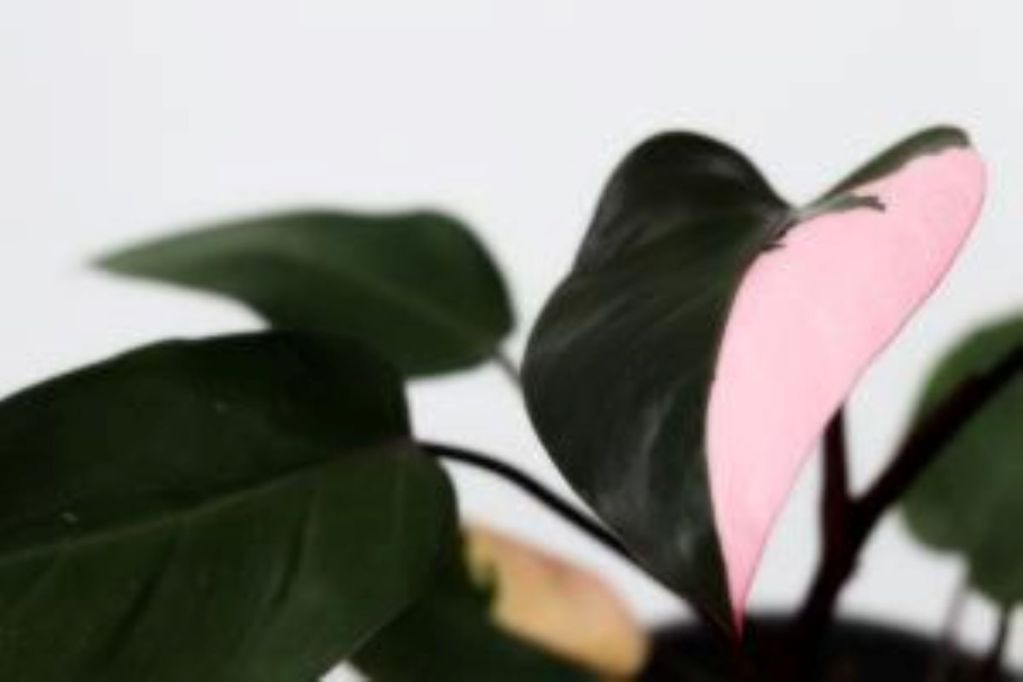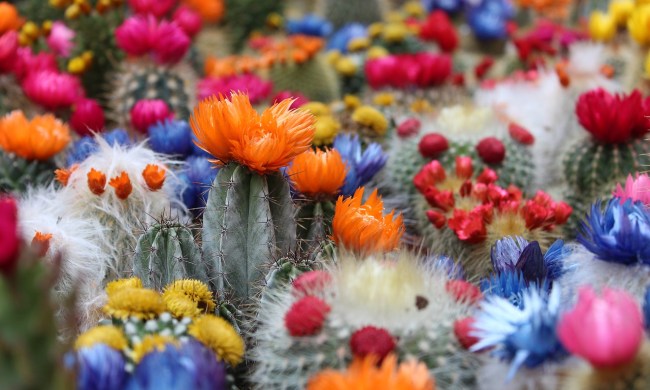Pink is a popular color, great for brightening up dull spaces and adding excitement and joy to any home or garden. There are many gorgeous pink plants you can choose from, but one plant seeing a rise in popularity is the pink princess philodendron. While philodendrons are fairly common houseplants, the pink princess philodendron is still fairly rare. This makes it extra scary to get your pink princess and not know how to care for it properly. Read on to see exactly what this plant wants and how you can care for it so that it thrives!
What is a pink princess?

The philodendron pink princess is a trailing plant that’s a part of the Araceae family. The pink princess’s real name is Philodendron erubescens, which inspired its other name, “blushing philodendron,” since erubescens means “blushing” in Latin.
The waxy leaves can grow up to 9 inches long and 5 inches wide. This plant is native to tropical environments, so it will need conditions that simulate that climate. They’re part of a group of plants called aroids, plants like monsteras, pothos, and ZZ plants that live in the “understory” of the forests. This means these plants are used to getting low amounts of light but lots of water.
They all have waxy leaves and roots that help reduce the amount of water they absorb, and it also means they can be propagated in water and even live in water full time. Just remember that if you decide to put your plant in water for a time, it will get harder for it to adapt to soil the longer it lives in water.
Pink princess is not a pink congo

There’s a bit of controversy around pink plants, and sometimes the pink princess gets unfairly looped into the mess. To make a long and ugly story short, some plant sellers tried to profit off the “pink plant” trend by injecting a philodendron with chemicals that would unnaturally alter the color of the leaves to a shade of pink.
This plant is known as a pink congo, and is not a legitimate plant. The pink variegation will revert to green within six to 12 months after the plant has been injected. Unfortunately, many plant enthusiasts have spent good money on these plants only to find out they’re fake. So be sure you’re buying a true philodendron pink princess so as not to get scammed like so many others have.
Care tips for the pink princess philodendron

Since this is a rarer plant, it’s imperative to fully understand its needs before you even bring it into your home. Not only will it cost you more money to replace this rare plant, but it will be harder to find a replacement since they can be difficult to find. If you’ve grown other types of philodendron, you shouldn’t find pink princesses too tricky to grow!
Water
Since they’re used to adequate water, the pink princess prefers its soil to stay almost consistently moist. However, it’s a pretty resilient plant and will survive if it’s left to dry out every so often. To avoid it getting too wet or too dry, invest in a water meter and check the soil every week to see if it needs anything. Then, when the soil begins to reach “non-moist” levels, give it a good soak until the water comes out of the drainage hole.
Light
Because of its pretty pink leaves, avoid putting this plant in direct light. The sun can burn and kill the pink princess quickly. Instead, find a spot with bright, indirect light.
Food
This plant will grow leaps and bounds from early spring to fall, provided with a balanced fertilizer about every four weeks or so. Just be sure not to overfeed the plant, as this can quickly kill it.
Humidity
Those tropical conditions will mean this plant wants more humid air than some of the other plants in your collection. You’ll want to keep the humidity level at least above 50 percent, but ideally, it would stick around 60 to 65 percent.
Temperature
The pink princess is a tropical plant that prefers rooms on the warmer side. However, it can survive anything between 55 and 95 degrees Fahrenheit. So, the average home temperature (65 to 75 Fahrenheit) is ideal for the princess.
Toxicity
It is toxic to cats and dogs, so it should be in a room or area of the home where these furry babies can’t reach it. If ingested, the pink princess can irritate the mouth and stomach.
Additional tips
Every new owner of a philodendron pink princess wants to know how to keep the leaves pink. This is a somewhat tricky question. Too much pink and the plant won’t have enough green leaves to produce chlorophyll to keep the plant alive, but too much green and you’ve now lost the “pink” to your pink princess. Ideally, you’ll want to keep your plant at a ratio of 50/50.
To do this, keep an eye on the plant as it pushes out new leaves. If you notice that the new leaves are all green or all pink, prune the vine back to the node where you were getting leaves with a good mix of green and pink. However, don’t do this at the first sign of an all-pink or all-green leaf. Instead, allow the plant to grow a few more, and if the next three or four leaves are still all one color, it’s time to prune.
Pink princess philodendron companion plants

Every princess needs a royal court! If you want to surround your pink princess philodendron with some gorgeous friends, here are a few of the best to choose from. If you’re growing your companion plants in separate containers, then you have more freedom to choose plants based on aesthetics. Consider choosing a lovely pink or purple plant to complement the pink princess’s leaves, or even a peach-colored plant to celebrate the 2024 color of the year.
If your plants will be in the same container, or you just want to simplify the care routine, focus on plants that enjoy the same conditions. Monstera, ZZ plants, and pothos are all great options. Continue the variegated trend across your companion plants with monstera albo and golden pothos.
If you’ve fallen in love with the pink and green combination like so many of us have, the pink princess is a fantastic plant to add to your home. Just be sure to provide it with the right amount of light, keep an eye on the variegation, and don’t feed it too often.



